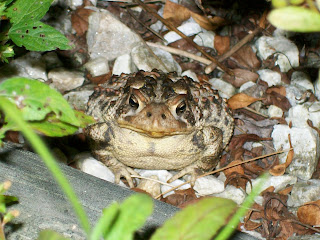Friday, October 21, 2011
Wednesday, September 21, 2011
Thursday, September 15, 2011
Friday, September 9, 2011
Crab Carapaces of Plymouth Beach
I have a bit of a thing for Crustaceans, especially crabs. Lucky for me, we have a fairly large number of crab species here in the northwest Atlantic Ocean. Last fall, I went to Plymouth Beach, where there were a large number of crab carapaces (their "shells") washed up on the beach. I believe that October-November is one of the times of the year when they molt their carapaces, and I guess the carapaces stay around longer on the beach during the fall when there are less people braving the howling winds on the beach. I took some pictures of some of the crab carapaces, and I hope that this post may serve as a way for people to tell the larger species we have apart.
 |
| Jonah Crab carapace Cancer borealis |
 |
| Atlantic Rock Crab Cancer irroratus |
As far as I know, from reading several books from the library and trying to find information online, one of the main diagnostic differences between Atlantic Rock Crabs and Jonah Crabs is the "toothed" edge to the sides of the Atlantic Rock Crab. By contrast, Jonah Crabs have a much more rounded side to the carapace, as the two imagines above illustrate. These two individual carapaces seemed to be on the extremes of the toothed/rounded spectrum; there were some that seemed to be much more intermediate between the two.
 |
| Lady Crab or Calico Crab Ovalipes ocellatus |
Summer Dragonflies
As many birdwatchers know, the middle of summer is the doldrums when it comes to birdwatching. The birds are much harder to see because they've not singing nearly as much and are trying to be inconspicuous as they raise their young. However, for those of us "Ode-watchers" (a fancy term for dragonfly watcher that I just made up, I think), the middle of summer can still be rewarding when one goes out "birdwatching". July is the month of the clear-wings, not the feather-wings, for me anyway. Here are a few of the pictures of Dragonflies I took this summer. Enjoy, and as always, click the pictures for bigger pictures.
 |
| Widow Skimmer (female) Libellula luctuosa |
 |
| Eastern Pondhawk (male) Erythemis simplicicolis |
 |
| Banded Pennant (male) Celithemis fasciata |
 |
| Widow Skimmer (male) Libellula luctuosa |
 |
| Violet Dancer Argia fumipennis violacea |
 |
| Blue Dasher (female) Pachydiplax longipennis |
 |
| Blue Dasher (male) Pachydiplax longipennis |
 |
| Eastern Pondhawk (female/immature male) Erythemis simplicicolis |
 |
| Eastern Pondhawk (transitional male eating a damselfly) Erythemis simplicicolis |
 |
| Banded Pennant (male) Celithemis fasciata |
 |
| Banded Pennant (male) Celithemis fasciata |
 |
| Widow Skimmer (male) Libellula luctuosa |
 |
| Meadowhawk (male) Sympetrum sp. |
Moths of August
August seems to be the best month of the year for moth activity in Massachusetts, though it's hard to tell for sure with less than 2 years of moth-watching under my belt. This year seems like it has been a bit of an off year in terms of moths, but I've started to keep track of the moths I see every night in my little nature notebook. I plan to have a much better understanding of the nature of my area of Massachusetts within a few years, especially in the areas not easily found in books, like moths. Anyways, here are some of the moths I managed to get pictures of this past August. I'm fairly certain about the IDs, but I'm open to any corrections.
 |
| Blurry Chocolate Angle Macaria transitaria |
 |
| Goldenrod Hooded Owlet Cucullia asteroides |
 |
| One-Spotted Variant Hypagyrtis unipunctata |
 |
| Celery Looper Anagrapha falcifera |
 |
| Master's Dart Feltia herilis |
 |
| Unarmed Wainscot Leucania inermis |
 |
| Large Maple Spanworm Prochoerodes lineola |
 |
| Large Maple Spanworm Prochoerodes lineola |
 |
| Clover Looper Caenurgina crassiuscula |
 |
| Copper Underwing Amphipyra pyramidea |
 |
| Large Maple Spanworm Prochoerodes lineola |
 |
| Pink-Spotted Dart Pseudohermonassa bicarnea |
 |
| Pondside Pyralid Moth Munroessa icciusalis |
 |
| Curve-Toothed Geometer Eutrapela clemataria |
 |
| Blackberry Looper (tan morph?) Chlorochlamys chloroleucaria |
 |
| Unarmed Wainscot Leucania inermis |
 |
| Pale Beauty Campaea perlata |
 |
| Mint-Loving Pyrausta Moth Pyrausta acrionalis |
 |
| Copper Underwing with an Oblong-Winged Katydid |
 |
| Dingy Cutworm Moth Feltia jaculifera |
 |
| Armyworm Spodoptera frugiperda |
 |
| Sensitive Fern Borer Papaipema inquaesita |
 |
| Master's Dart Feltia herilis |
Pickerel Frog pictures
One frog that is fairly common in Massachusetts is the Pickerel Frog, Rana palustris. These frogs are sometimes confused with the (less common in my area) Northern Leopard Frog, but I've only encountered Pickerel Frogs in my adventures, though I did hear the distinctive call of the Northern Leopard Frog one night this past spring. Anyway, here are a few of the pictures I have managed to get when I have stumbled across the easily-stumble-acrossable Pickerel Frogs. Enjoy.
Thursday, August 11, 2011
Backyard Butterfly: Common Wood Nymph
You never know what you'll find when it comes to nature. Even just a 5 minute walk around my house can yield a species that I have not seen before. Today that species is the butterfly known as the Common Wood Nymph, the only species of Wood Nymph that occurs in Massachusetts. Common Wood Nymphs are closely related to three species that I have become very familiar with in the last 2 years: Little Wood Satyrs, and Appalachian and Eyed Browns. Enjoy the photos.
 |
| Common Wood Nymph |
 |
| Common Wood Nymph |
 |
| Common Wood Nymph |
 |
| Common Wood Nymph, with wings open |
What will I find in my yard next?
Subscribe to:
Comments (Atom)






